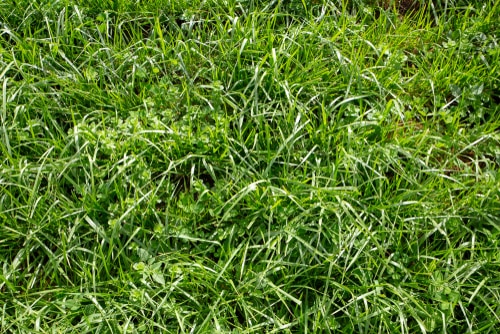New fescue grass turning yellow can be a frustrating problem for homeowners who have invested time and money into establishing a lush, green lawn.
While fescue is a popular grass type for its durability and versatility, it is also prone to yellowing due to a variety of factors. Understanding the causes and effects of yellowing in fescue grass can help homeowners prevent and treat the issue effectively.
Yellowing in fescue grass can be caused by several factors, including overwatering, underwatering, nutrient deficiencies, pests, diseases, and seasonal changes.
In some cases, yellowing may be a natural part of the grass’s growth cycle, while in others, it may be a sign of a more serious problem. By identifying the specific cause of yellowing, homeowners can take targeted steps to address the issue and restore their lawn to its vibrant green color.
Preventing and treating yellowing in fescue grass requires a combination of good lawn care practices and targeted treatments.
This may include adjusting watering schedules, fertilizing with the right nutrients, using pest and disease control products, and providing adequate shade or sun exposure. With the right approach, homeowners can enjoy a lush, green fescue lawn all year round.
Key Takeaways on New Fescue Grass Turning Yellow
- Yellowing in fescue grass can be caused by a variety of factors, including overwatering, nutrient deficiencies, pests, diseases, and seasonal changes.
- Identifying the specific cause of yellowing is key to preventing and treating the issue with targeted treatments.
- Good lawn care practices, such as proper watering and fertilizing, can help prevent yellowing in fescue grass.
You might also like:
Understanding Yellowing in Fescue Grass
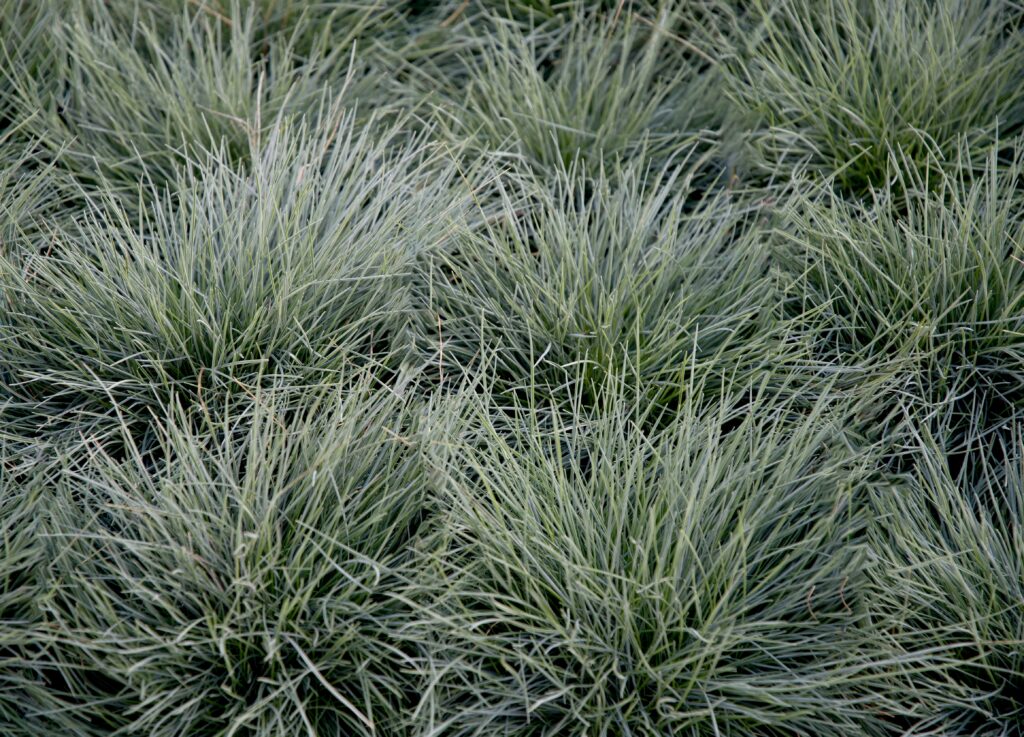
Fescue grass is a popular choice for lawns in many regions due to its ability to withstand drought and cold temperatures. However, it is not uncommon for new fescue grass to turn yellow, which can be concerning for homeowners.
Understanding the reasons behind yellowing in fescue grass can help identify the problem and take appropriate steps to remedy it.
Causes of Yellowing in Fescue Grass
There are several reasons why fescue grass may turn yellow. Some of the most common causes include:
- Lack of nutrients: Fescue grass requires a balanced supply of nutrients to grow healthy and green. A lack of essential nutrients, such as nitrogen, iron, or potassium, can cause the grass to turn yellow.
- Overwatering or underwatering: Fescue grass needs consistent moisture to thrive. Overwatering or underwatering can cause stress to the grass, which can lead to yellowing.
- Lack of sunlight: Fescue grass requires at least 4-6 hours of sunlight per day to grow healthy and green. A lack of sunlight can cause the grass to turn yellow and thin out.
- Disease or pests: Certain diseases and pests can cause fescue grass to turn yellow. For example, brown patch disease can cause circular yellow patches in the lawn, while chinch bugs can cause yellowing and thinning of the grass.
Remedies for Yellowing in Fescue Grass
The appropriate remedy for yellowing in fescue grass depends on the underlying cause. Some common remedies include:
- Fertilization: Applying a balanced fertilizer can help provide the necessary nutrients to the grass. It is important to follow the recommended application rates and timings to avoid overfertilization, which can cause more harm than good.
- Adjusting watering: Adjusting the watering schedule and amount can help alleviate stress on the grass. It is important to water deeply and infrequently, rather than shallowly and frequently, to encourage deep root growth.
- Increasing sunlight: If the grass is not receiving enough sunlight, pruning trees and shrubs can help increase the amount of sunlight the grass receives. In some cases, it may be necessary to consider alternative turfgrass species that are better adapted to shade.
- Treating disease or pests: If the yellowing is caused by disease or pests, appropriate treatments should be applied. Consult with a lawn care professional to identify the specific problem and determine the best course of action.
In summary, yellowing in fescue grass is a common problem that can be caused by a variety of factors. Understanding the underlying cause and taking appropriate steps to remedy the problem can help restore the grass to a healthy and vibrant state.
Yellowing of New Fescue Grass – 4 Common Problems
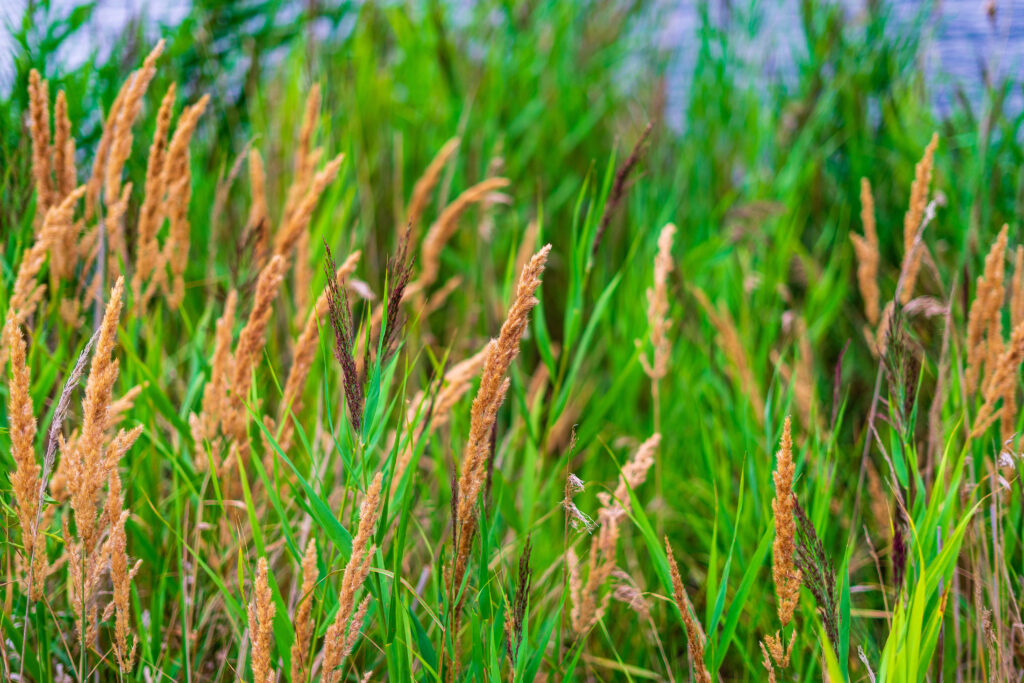
New fescue grass turning yellow can be a frustrating experience for homeowners. Yellowing can be caused by a variety of factors, including overwatering, underwatering, disease and fungal infections, pests and insect infestation, fertilizer burn, and nutrient deficiency.
1. Overwatering and Underwatering
Overwatering and underwatering can both cause yellowing of fescue grass. Overwatering can lead to root rot, which can cause the grass to turn yellow and eventually die. On the other hand, underwatering can cause the grass to become stressed and turn yellow.
To avoid overwatering, it is important to ensure that the soil is well-draining and that the grass is not watered too frequently. To avoid underwatering, it is important to water the grass deeply and infrequently.
2. Disease and Fungal Infections
Disease and fungal infections can also cause fescue grass to turn yellow. Common fungal diseases that can cause yellowing include brown patch and dollar spot. These diseases can be prevented by ensuring that the grass is not overwatered and that it is properly fertilized.
3. Pests and Insect Infestation
Pests and insect infestation can also cause yellowing of fescue grass. Common pests that can cause yellowing include chinch bugs, grubs, and sod webworms. These pests can be prevented by ensuring that the grass is properly fertilized and that it is not overwatered.
4. Fertilizer Burn and Nutrient Deficiency
Fertilizer burn and nutrient deficiency can also cause fescue grass to turn yellow. Overfertilization can cause the grass to burn, while nutrient deficiency can cause the grass to become stressed and turn yellow. It is important to ensure that the grass is properly fertilized and that it receives the necessary nutrients to remain healthy.
Impact of Seasonal Changes
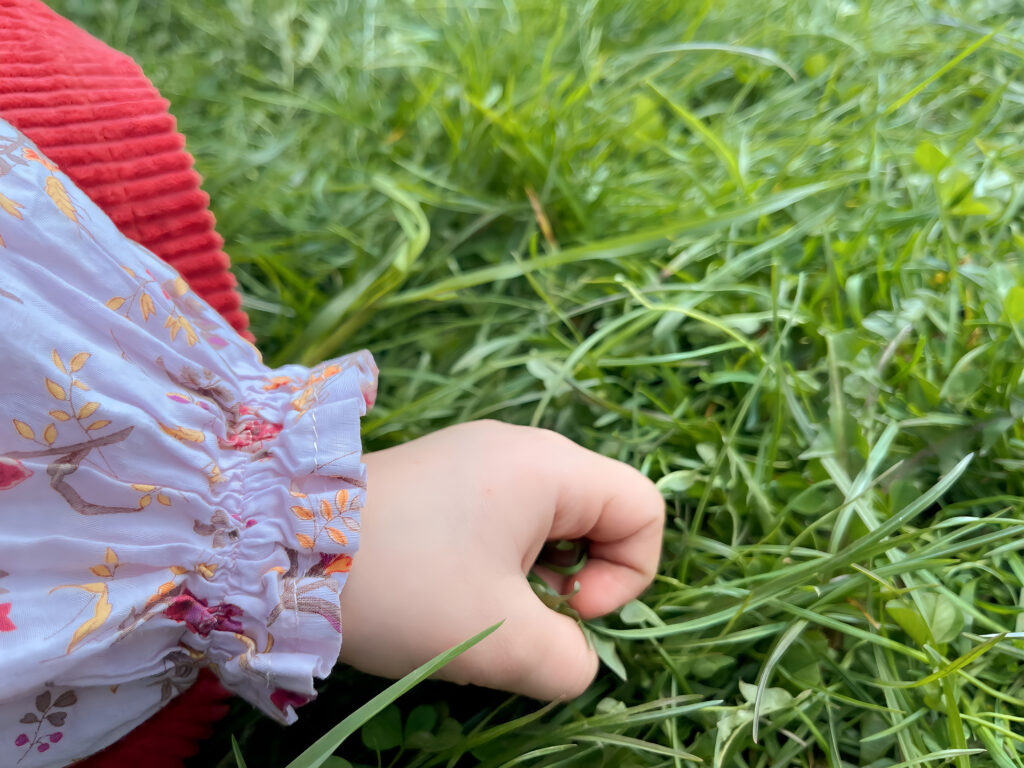
Summer Heat Stress
Fescue grass is a cool-season grass that prefers temperatures between 60°F and 75°F. When temperatures rise above 85°F, fescue grass can experience heat stress. Symptoms of heat stress include yellowing, browning, and wilting of the grass blades.
To prevent heat stress, it is recommended to water the grass deeply and less frequently, preferably in the early morning or late evening when temperatures are cooler. Additionally, mowing the grass at a higher height can help to shade the soil and reduce water loss.
Fall Dormancy and Frost
In the fall, fescue grass enters a period of dormancy as temperatures begin to cool. During this time, the grass may turn yellow or brown and appear dead. However, this is a natural process and the grass will green up again in the spring.
Frost can also cause fescue grass to turn yellow. Frost damage is often temporary and the grass will recover once temperatures rise above freezing.
Winter Yellowing
Fescue grass can turn yellow in the winter due to a lack of sunlight and cold temperatures. This is a common occurrence and does not necessarily indicate a problem with the grass.
However, if the grass remains yellow in the spring, it may be a sign of a nutrient deficiency or other issue. To prevent winter yellowing, it is recommended to fertilize the grass in the fall and to avoid excessive foot traffic on the grass during the winter months.
Effects of Shade and Sun Exposure
Fescue grass requires a moderate amount of sunlight to grow and thrive. If the grass is planted in an area with too much shade or too much sun, it can turn yellow and become unhealthy.
Shade can be a problem for fescue grass because it limits the amount of sun that the grass receives. Without enough sun, the grass cannot perform photosynthesis, which is the process that allows plants to convert sunlight into energy.
This lack of energy can cause the grass to turn yellow and become weak. Additionally, shade can create a moist environment that can lead to fungal growth, which can also cause the grass to turn yellow.
On the other hand, full sun can also be a problem for fescue grass. If the grass is exposed to too much sun, it can become dehydrated and stressed. This can cause the grass to turn yellow and become brittle. To prevent this, it is important to water the grass regularly and deeply, especially during periods of hot, dry weather.
In general, fescue grass prefers to be planted in areas that receive partial sun or filtered shade. This allows the grass to receive enough sunlight to perform photosynthesis while also protecting it from the harsh rays of the sun.
If the grass is planted in an area with too much shade or too much sun, it may require additional care and attention to remain healthy and green.
In summary, the amount of shade or sun exposure that fescue grass receives can have a significant impact on its health and appearance. Planting the grass in an area with the appropriate amount of sunlight, regular watering, and proper care can help prevent yellowing and keep the grass looking green and lush.
Preventing and Treating Yellowing Fescue Grass
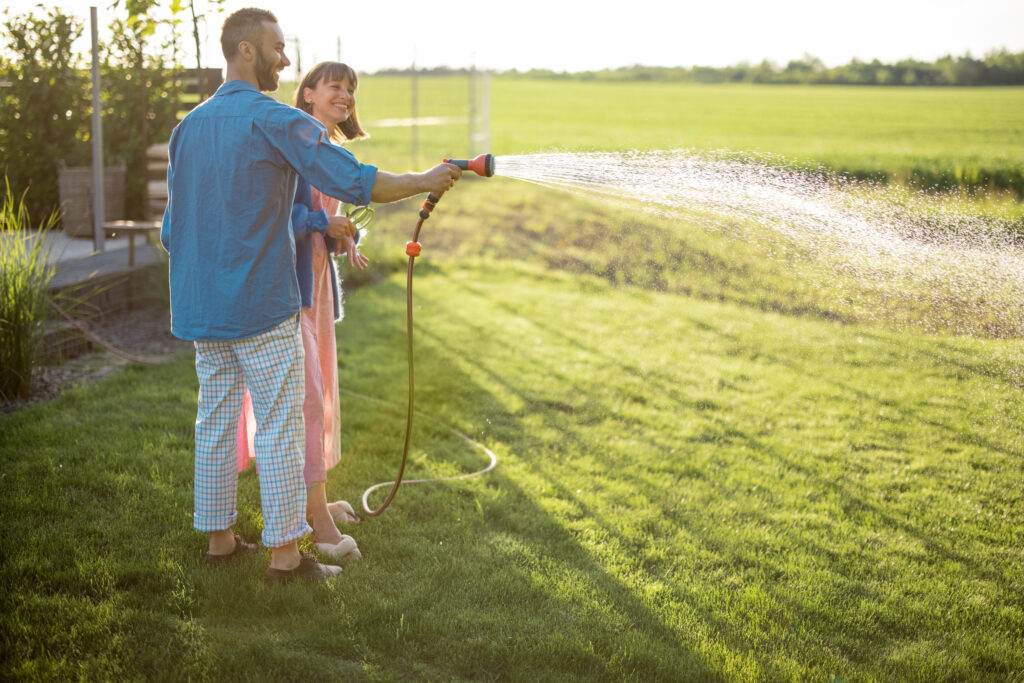
Fescue grass can turn yellow for a variety of reasons, including poor soil conditions, lack of water, disease, and pests. Preventing and treating yellowing fescue grass requires a combination of proper watering practices, fertilizing and soil amendments, disease control, and professional lawn care.
1. Proper Watering Practices
One of the most common reasons for yellowing fescue grass is lack of water. Proper watering practices can help prevent yellowing and promote healthy growth. Fescue grass should be watered deeply and infrequently, rather than lightly and frequently. This allows the water to penetrate deep into the soil and encourages deep root growth.
It is important to water fescue grass early in the morning or in the evening, when temperatures are cooler and there is less evaporation. Watering during the hottest part of the day can lead to water loss and stress on the grass.
2. Fertilizing and Soil Amendments
Fertilizing and soil amendments can help prevent yellowing fescue grass by promoting healthy growth and providing essential nutrients. Starter fertilizers can be used when planting new fescue grass to encourage root growth and establishment.
Ironite can be used to add iron to the soil, which can help prevent yellowing and promote green growth. Manure can also be used as a natural fertilizer and soil amendment, providing essential nutrients to the soil.
3. Disease Control and Fungicide Use
Disease and fungal infections can cause yellowing and other issues with fescue grass. Proper disease control and fungicide use can help prevent and treat these issues. Fungicides should be used as directed and only when necessary.
4. Professional Lawn Care
Professional lawn care can help prevent and treat yellowing fescue grass by providing regular maintenance and care. Lawn care professionals can provide fertilization and weed control services, as well as disease and pest control. They can also provide advice on proper watering practices and other lawn care techniques.
Comparative Analysis of Fescue with Other Grass Types

Fescue grass is a popular choice for lawns due to its shade tolerance, low maintenance requirements, and ability to grow in a variety of soil types. However, it is not immune to problems such as turning yellow, which can be a cause for concern for homeowners.
Compared to other grass types, fescue has a finer texture and is less tolerant of heavy foot traffic. Bermuda grass, on the other hand, is a popular choice for sports fields and golf courses due to its ability to withstand heavy use. St. Augustine grass is another popular choice for lawns in warmer climates due to its heat tolerance.
Perennial rye is another grass type that is often used in conjunction with fescue for overseeding purposes. It has a rapid germination rate and can quickly fill in bare spots in a lawn. However, it is not as tolerant of shade as fescue and may require more frequent watering.
When it comes to new sod, fescue grass can take longer to establish than other grass types. It may take up to three weeks for fescue sod to root and begin growing. However, once established, fescue can provide a lush and attractive lawn with minimal maintenance.
Frequently Asked Questions
How do you fix yellow fescue grass?
Yellow fescue grass can be fixed by addressing the underlying cause. If the grass is overwatered, reduce the watering frequency. If it is underwatered, increase the frequency. If the soil is compacted, aerate it to improve drainage.
If the grass is not getting enough nutrients, fertilize it with a balanced fertilizer. If it is suffering from a disease or pest infestation, treat it with an appropriate fungicide or pesticide.
Why is newly planted grass turning yellow?
Newly planted grass may turn yellow due to a variety of reasons, including overwatering, underwatering, lack of nutrients, compacted soil, or disease. It is important to identify the underlying cause and address it promptly to prevent further damage to the grass.
What is the yellowing in tall fescue?
The yellowing in tall fescue can be caused by a number of factors, including overwatering, underwatering, nutrient deficiencies, disease, or pest infestations. It is important to identify the underlying cause and address it promptly to prevent further damage to the grass.
How long should you water new fescue?
Newly planted fescue grass should be watered frequently but lightly to keep the soil moist. Watering should be done for short periods of time, typically 5-10 minutes, 2-3 times per day for the first 2-3 weeks.
After that, the frequency can be reduced to once per day or every other day, depending on the weather conditions.
What are the best fertilizers for yellow grass?
The best fertilizers for yellow grass are those that are high in nitrogen, such as a 10-10-10 or 20-10-10 fertilizer. These fertilizers will help to promote healthy growth and improve the color of the grass. It is important to follow the manufacturer’s instructions when applying fertilizer to avoid over-fertilization, which can damage the grass.
Will yellow grass come back?
Yellow grass can come back if the underlying cause is identified and addressed promptly. Depending on the cause, the grass may recover on its own or may require treatment with fertilizer, fungicide, or pesticide.
It is important to maintain proper watering and fertilization practices to prevent the grass from turning yellow again in the future.

Hey, I’m Lisa and I’ve been an avid gardener for over 30 years. I love writing, talking and living in the garden! Feel free to connect with me on my socials below

